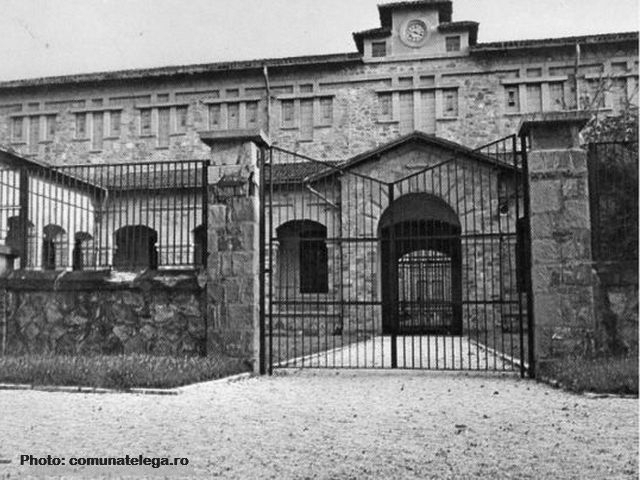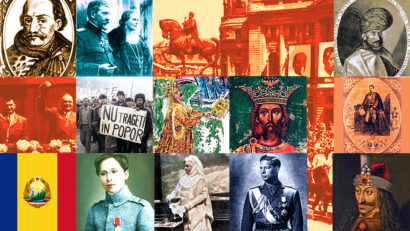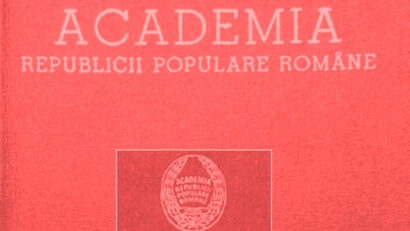Doftana Penitenciary
Doftana penitentiary was the place used to show people how hard it had been for the Communists

România Internațional, 09.10.2023, 14:39
Totalitarian regimes and their people, leaders and ordinary members of the communist and fascist parties, hysterically shouted to the whole world the suffering and persecutions they were allegedly subjected to by the democratic regime. But when they came to hold power in the state, the totalitarian parties used their mythological past to really instill terror in society. The grand master of terror and lies was undoubtedly the communist party regime. It built mythological fortresses around the suffering of its own leaders and members, the public representation being open museums in the penitentiaries where they had been incarcerated for the crime of terrorism.
In Romania, Doftana prison was the place used to show the public how hard it had been for the Communists. Located in the sub-Carpathian area approximately 120 kilometers north of Bucharest, the prison was opened in 1895. Although it is known as the communist prison or the Romanian Bastille, Corneliu Zelea Codreanu and Horia Sima, the two heads of the Iron Guard, were also imprisoned there. Famous names of the communist party passed through Doftana, from the first generation including Gheorghe Gheorghiu-Dej or the Stalin of Romania, Chivu Stoica, Alexandru Moghioroș, Gheorghe Apostol, but also from the second generation such as Nicolae Ceaușescu and Grigore Preoteasa.
The adventure of the Doftana penitentiary as a museum began in 1949. After the installation of the pro-Soviet government led by Petru Groza on March 6, 1945, through the fist of the Soviet emissary Andrei Vâsinski shown in the office of King Mihai I, the executive proceeded to change Romania. For the reconstruction of the prison-museum Doftana, very large sums of money were allocated for that time of great shortages after the war. The Association of Former Anti-Fascist Political Prisoners from Romania, a branch of the International Federation of Former Political Prisoners Victims of Fascism, and the Romanian Association for Relations with the Soviet Union were directly involved in the project. Cristian Vasile is a historian at the Nicolae Iorga Institute of History of the Romanian Academy and studies the way in which the communist regime propagandistically turned the history of Romania after 1945 into a museum exhibit.
Track: There comes November 10th, 1940, and the Doftana penitentiary is felled to the ground. Walls are falling down and remain there until 1948. The communists rebuilt that museum almost from scratch, as they wanted it to be, not as it really looked like before. They invested millions there, there are accounting books showing how much money was invested there.
Doftana was the living history of Romanian communism and was proposing Romanian society a chaning past, to match the future. Cristian Vasile:
“Until 1965, they would talk a lot about the cell of comrade Gheorghe-Gheorghiu Dej. After 1965, they started talking about the cell of comrade Ceausescu. Was Doftana the real national history museum? The comparison with the French Revolution became more visible starting with March 1948, when the announcement was made that Doftana was to become a national museum, as the former prison was dubbed the Bastille of Romanian reaction. It was not about establishing a national history museum, but turning into a national museum a museum that spoke of the repression that the communists had been subject to. Moreover, at least at subliminal level, the message was conveyed that in fact the future Doftana museum or the future party museum, with Doftana as one of if branches, was the real national history museum. In time, the idea was put on the back burner, then abandoned.
Doftana had become a place of secular pilgrimage for the communist regime. Students and young people would be taken there, and the ceremonies for the newly registered pioneers were also organized at the former penitentiary. The cult of Doftana had also reached musical art, the choral works “Im watching from Doftana and the symphonic poem The Fall of Doftana by Alfred Mendelsohn from 1950 being emblematic in this regard. The most popular figure from Doftana was Ilie Pintilie, dead in the earthquake of 1940, turned into a museum figure because he was ethnically Romanian and because he had been a member of the Central Committee of the Communist Party. Moreover, the name of Ilie Pintilie was also given to a boulevard. Cristian Vasile says that the rivalries, political battles and settlement of accounts within the PCR weighed enormously in the museum’s representation of the communists imprisoned there. For example, the figures of Lucrețiu Pătrășcanu, Vasile Luca, Ana Pauker, opponents of the leader Dej, were exhibited at Doftana, then removed.
“They didnt even consider Stefan Foris. Patrascanu is not just considered for the first exhibition, he is a member of the Central Committee of that Anti-fascist Federation, the fourth after Dej, Teoharie Georgescu, Luca and Patrascanu. In 1948, though, Patrascanu is expelled from the communist community and any legend about him removed. Ana Pauker too is excluded in 1952, followed by Luca and then Teohari Georgescu.
The museum-prison of Doftana disappeared in 1990. Besides the scarcity of money for such a project, he lie couldnt live forever.




























